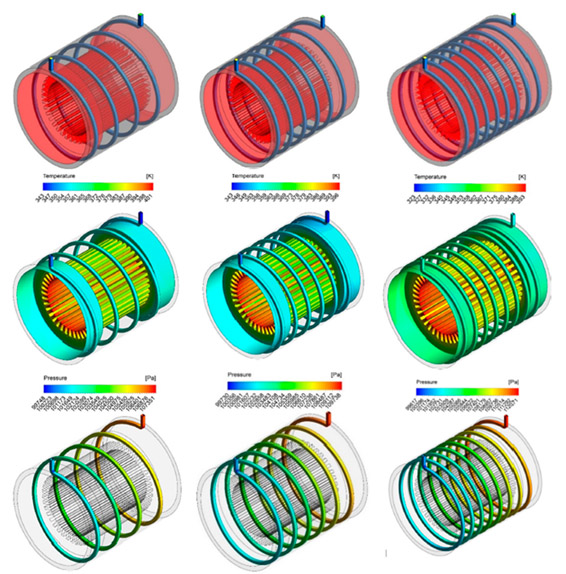ReFreeDrive project’s research activities on electric motor cooling technologies have led to several scientific results worth publishing. In this sense, throughout 2019 University of L’Aquila carried out works on different cooling fluids performance, as well as cooling circuits design and optimization, taking into account fluid flow and heat transfer phenomenon.
We are glad to share with you the research results. You can find the complete reference of the articles published, as well as a brief summary of each of them below:
Title: Numerical investigation of fluid flow and heat transfer characteristics in cooling of electrical motor by using nanofluid in the spiral channel.
Authors: A. Deriszadeh, F. de Monte.
Conference: 37th UIT heat transfer conference.
Abstract: In this paper, properties of flow and heat transfer of nanofluid in the spiral channel used in the cooling system of an electric motor are numerically investigated. The finite element method is used to solve the governing equations. The flow regime is considered as laminar and the base fluid is water. In addition to pure water flow, the effect of the cooling system is studied. The Reynolds number of the fluid, turns number of the spiral channel, volume fraction of the nanofluid, and pressure drop of the coolant are the most important evaluation parameters of this study. Heat transfer analyses are performed based on computational fluid dynamics and 3D fluid motion analysis.
Title: Hydrothermal performance of ethylene glycol and water mixture in a spiral channel for electric motor cooling
Authors: A. Deriszadeh, F. de Monte, M. Villani, L. di Leonardo
Conference: 2019 21st European Conference on Power Electronics and Applications (EPE ’19 ECCE Europe
DOI: 10.23919/EPE.2019.8914967
Abstract: This paper investigates the feasibility of a direct liquid cooling technique for the thermal management system of an electrical machine for automotive application. The cooling system is a closed liquid coolant loop employing a mixture of ethylene glycol and water as a coolant. General performance of the cooling system at different volume fractions of mixture of ethylene glycol and water is evaluated. Various geometry of the cooling system, and physical characteristics of the coolant fluid are studied. Thermal analyses of the cooling system are performed using computational fluid dynamics and 3D turbulent fluid motion analysis. According to analysis, influence of the critical parameters on the performance of the cooling system is studied.
Title: On heat transfer performance of cooling systems using nanofluid for electric motor applications
Authors: A. Deriszadeh, F. de Monte.
Journal: Entropy 2020, 22(1), 99
DOI: 10.3390/e22010099
Abstract: This paper studies the fluid flow and heat transfer characteristics of nanofluids as advanced coolants for the cooling system of electric motors. Investigations are carried out using numerical analysis for a cooling system with spiral channels. To solve the governing equations, computational fluid dynamics and 3D fluid motion analysis are used. The base fluid is water with a laminar flow. The fluid Reynolds number and turn-number of spiral channels are evaluation parameters. The effect of nanoparticles volume fraction in the base fluid on the heat transfer performance of the cooling system is studied. Increasing the volume fraction of nanoparticles leads to improving the heat transfer performance of the cooling system. On the other hand, a high-volume fraction of the nanofluid increases the pressure drop of the coolant fluid and increases the required pumping power. This paper aims at finding a trade-off between effective parameters by studying both fluid flow and heat transfer characteristics of the nanofluid.

Up: Schematic of the cooling system with 4 turns (left), 6 turns (mid) and 8 turns (right)
Mid: Temperature distribution at Re=2000 with 4 turns (left), 6 turns (mid) and 8 turns (right)
Down: Pressure distribution with 4 turns (left), 6 turns (mid) and 8 turns (right)

Comentarios recientes